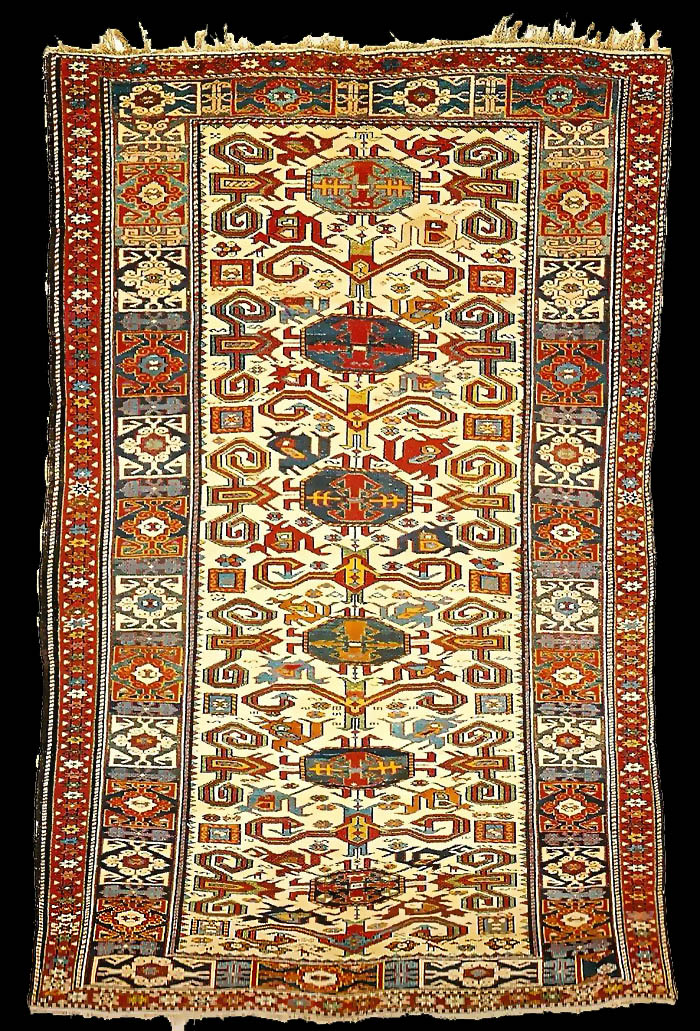back to antique Kuba Perepedil rugs
 |
This Kuba Pirebedil rug was published at Luciano Coen's and Louise Duncan's "Oriental Rug" book. 50. KUBA PEREPEDIL 19th century, 6'10" x 4'4" [m. 2.12 x 1.34] Warp: wool Weft: wool, two shoots after each row of knots Knotting: Ghiordes (Turkish), wool, 112 knots per square inch [1800 knots per dm2] …These two are very characteristic of their origin. They invariably have the ram's-horn design through the center of the field and the double key around the edge with the kufic letter border. In this case the central field is decorated with birds, which is also typical of this group, and there is often a star border. Although many colors are used in the small figures, the counterpoint in the design comes partly from the dominant contrast of black and white. The contrast between these two rugs is a perfect example of how much the individual weaver is able to influence the look of a rug made under fairly rigid strictures. While the rug in Plate 49 has distinctive color and beautifully executed figures (the star and birds in particular), the loose charm of the design and gay colors In Plate 50 give it more vitality... |
